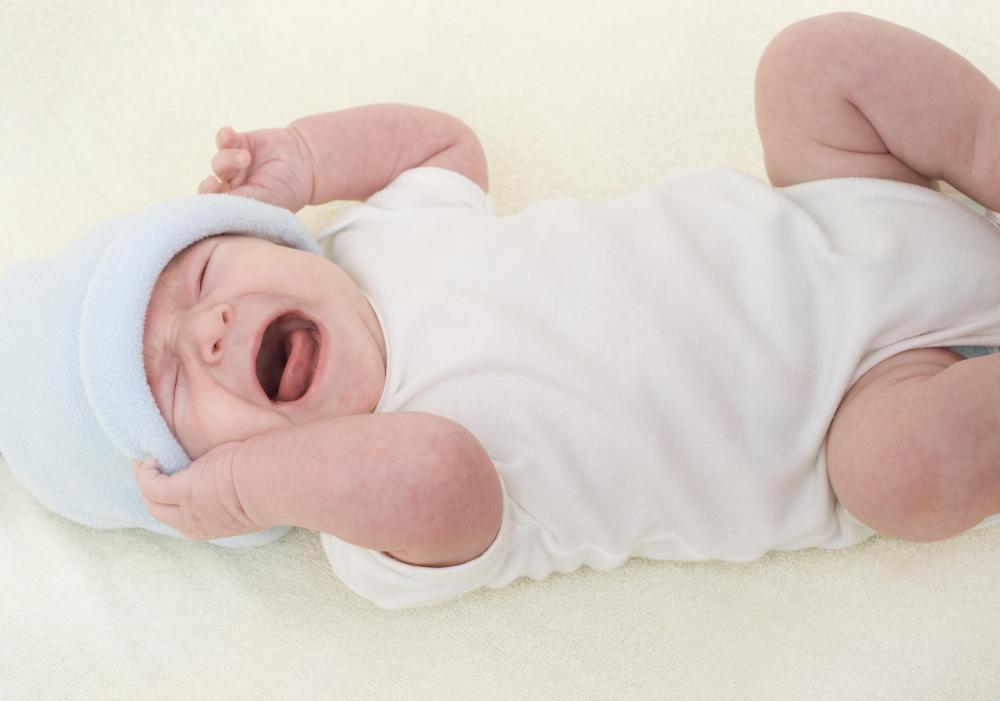At TheHealthBoard, we're committed to delivering accurate, trustworthy information. Our expert-authored content is rigorously fact-checked and sourced from credible authorities. Discover how we uphold the highest standards in providing you with reliable knowledge.
What is Phototherapy for Jaundice?
Phototherapy for jaundice involves putting the affected baby under a special set of lights, sometimes known as bili lights. Many newborn or very young babies develop jaundice, a yellowing of the skin and eyes caused by the buildup of bilirubin, which is the byproduct of the normal breakdown of red blood cells. The liver processes bilirubin, but an infant's liver often takes some time to start doing this efficiently after birth. Hyperbilirubinemia, or excess bilirubin in the body, can be dangerous for the baby if left untreated. Phototherapy for jaundice is by far the most common treatment, and is quite simple, safe, and effective.
The light waves used in phototherapy for jaundice break up bilirubin. An infant's body can then pass it effectively and ensure that it does not build up to dangerous levels. Phototherapy for jaundice is not usually used for jaundiced adults because it is a temporary measure, and adult jaundice almost always has some underlying cause.

Left untreated, mild neonatal jaundice usually goes away on its own as the baby's liver matures. More severe jaundice can cause serious problems if untreated, including the possibility of brain damage and death due to a condition called kenicterus caused by too much bilirubin. For this reason, most cases of moderate or severe jaundice are treated with phototherapy in order to prevent worsening of the condition.

While undergoing phototherapy for jaundice, a baby will need multiple blood tests in order to see if the bilirubin level in the blood is decreasing with treatment. When the level is low enough, the baby can stop receiving phototherapy and should not have any future problems with jaundice. If phototherapy is not successful or if the bilirubin levels are dangerously high, the infant may need a blood transfusion.

Each baby will need a different length of treatment often ranging from a few hours to a few days. In some cases, treatment can be done in the home with a nurse coming by to check the baby's vital signs and bilirubin levels. If after going home a baby's skin becomes more yellow, or the infant is not eating, sleeping, or eliminating normally, parents should contact a medical professional right away.

There are a few side effects of phototherapy, but they are rarely lasting or serious. The baby's eyes need to be covered by a mask or blanket so that they are not damaged by too much light exposure, and the skin can become irritated or reddened by the lights. Babies can become overheated or chilled while receiving phototherapy, and fluid intake and output will need to be monitored to avoid dehydration, using intravenous fluids if necessary. Parents of babies undergoing phototherapy for jaundice may not be able to hold their baby as frequently since a great deal of time under the lights is required, which can be stressful for parents.
AS FEATURED ON:
AS FEATURED ON:


















Discuss this Article
Post your comments